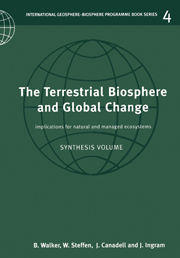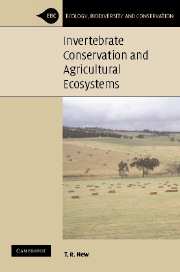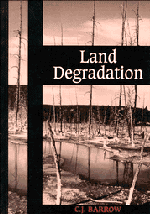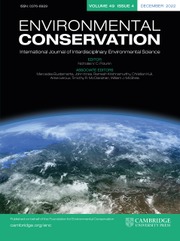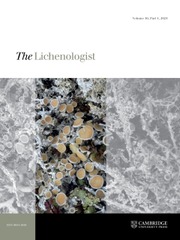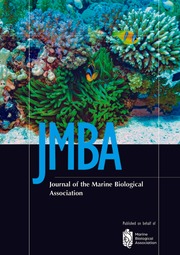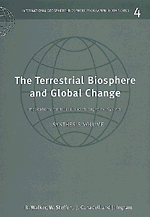Global Change and Terrestrial Ecosystems
How will the world's vegetation, from 'natural' ecosystems to intensively managed agricultural systems, be affected by changes in land use, the composition of gases in the atmosphere, and climate? This major new book describes the current state of knowledge.
- Star cast of contributors from around the world
- Second in a new book series dealing with a major programme of research in the field of global change
- State of the science assessment of the effects of raised carbon dioxide levels on land-based ecosystems
Reviews & endorsements
'… should be available and read by a large number of scientists, not only from biology and the geoscience.' Claus Buschmann, Journal of Plant Physiology
'All in all this is an up to date, well referenced book which all those concerned with climatic and other global changes should consult. I recommend the book.' Iam W. Drummond, OUGS Journal
' … the volume by Walker and Steffen deserves a prominent place on the bookshelves of scientists dealing with terrestrial ecosystem aspects of global change.' Harald Bugmann, Progress in Physical Geography
Product details
No date availableHardback
9780521570947
637 pages
255 × 178 × 35 mm
1.375kg
63 b/w illus. 11 colour illus. 51 tables
Table of Contents
- Part I. Introduction:
- 1. GTCE Science: objectives, structure, and implementation B. H. Walker and W. L. Steffen
- Part II. Ecosystem Physiology:
- 2. Ecosystem physiology H. A. Mooney
- 3. The response of complex multispecies systems to elevated CO2 C. H. Korner
- 4. Elevated CO2 and terrestrial vegetation: implications for and beyond the global carbon budget F. A. Bazzaz et al.
- 5. The role of vegetation in controlling carbon dioxide and water exchange between land surface and the atmosphere E. -Detlef Schulze et al.
- 6. Integrated models of ecosystem function: a grassland case study Michael B. Coughenour and W. J. Parton
- Part III. Ecosystem Structure:
- 7. The importance of structure in understanding global change H. H. Shugart
- 8. The application of patch models in global change research T. M. Smith and H. H. Shugart
- 9. Climate change, disturbances and landscape dynamics Robert H. Gardner et al.
- 10. Linking the human dimension to landscape dynamics Ian R. Noble
- 11. Landscape diversity and vegetation response to long-term climate change in the Eastern Olympic Peninsula, Pacific Northwest USA L. B. Brubaker and J. S. McLachlan
- Part IV. Agriculture, Forestry and Soils:
- 12. The work of Focus 3 P. B. Tinker and J. S. I. Ingram
- 13. Agriculture and global change: scaling direct carbon dioxide impacts and feedbacks through time R. M. Gifford et al.
- 14. Predicting crop yields under global change J. Goudriaan
- 15. Global change impacts on managed forests S. Linder et al.
- 16. Linked pest-crop models under global change P. S. Teng et al.
- 17. Soil erosion under climate change C. Valentin
- Part V. Ecological Complexity:
- 18. Global change and ecological complexity O. E. Sala
- 19. Self organization in ecosystems: lumpy geometries, periodicities and morphologies C. S. Holling et al.
- 20. Diversity of soil biota and ecosystem function O. W. Heal et al.
- 21. The functional role of species in terrestrial ecosystems F. S. Chapin III et al.
- 22. Carbon and nitrogen interactions in the terrestial biosphere: anthropogenic effects J. M. Melillo
- 23. Global dynamic vegetation modeling: coupling biogeochemistry and biogeography models R. P. Neilson and S. W. Running
- 24. Global and regional land use responses to climate change M. L. Parry et al.
- 25. Incorporating land-use change in Earth system models illustrated by Image 2 R. Leemans
- 26. Developing the potential for describing the terestrial biosphere's response to a changing climate F. I. Woodward
- 27. Data requirements for global terrestrial ecosystem modelling W. Cramer and A. Fischer
- 28. Satellite data for monitoring, understanding and modelling of ecosystem functioning A. Fischer et al.
- 29. Predicting a future terrestrial biosphere: challenges to GTCE science B. H. Walker
- Index.


